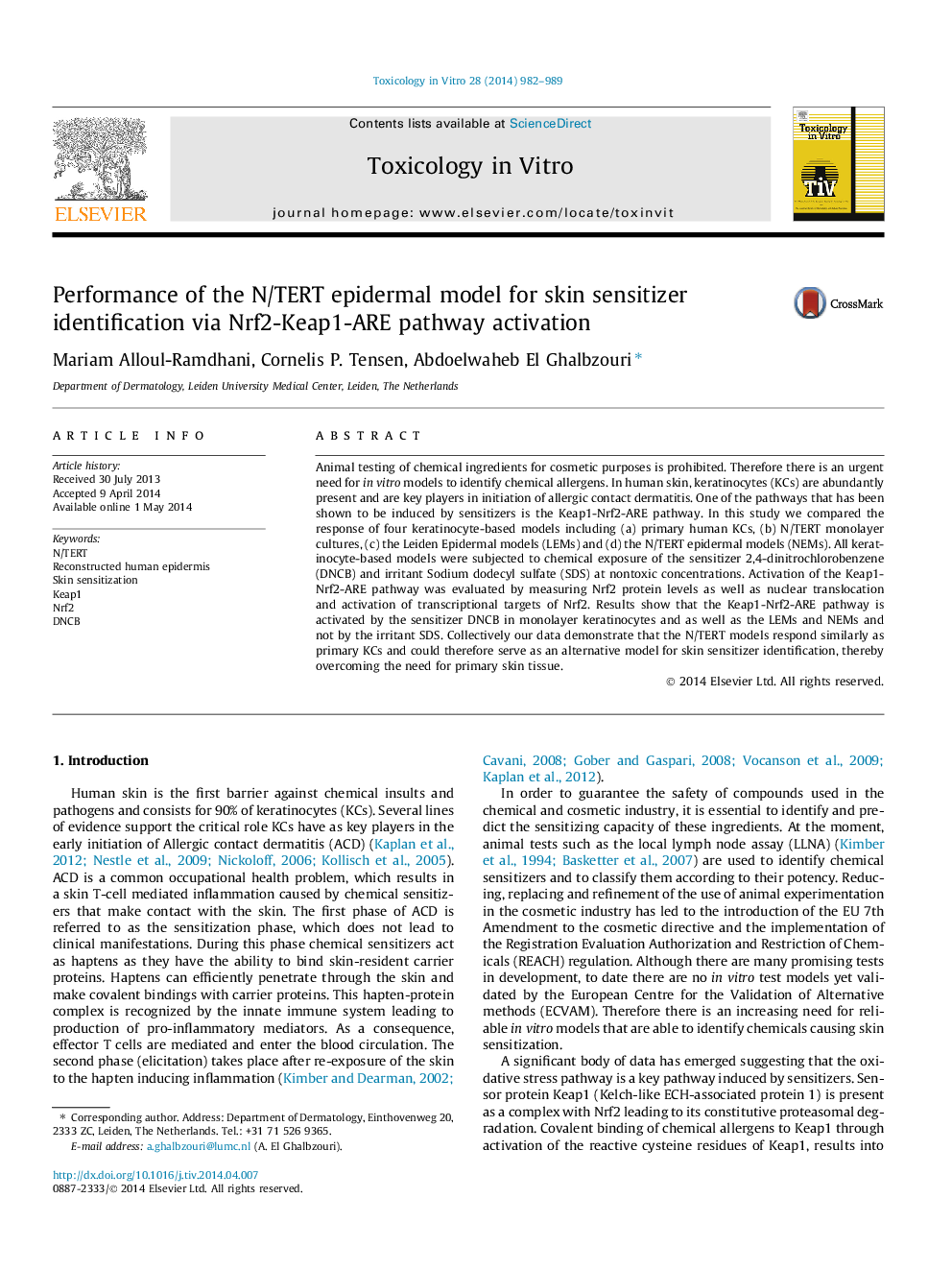| Article ID | Journal | Published Year | Pages | File Type |
|---|---|---|---|---|
| 5862253 | Toxicology in Vitro | 2014 | 8 Pages |
Abstract
Animal testing of chemical ingredients for cosmetic purposes is prohibited. Therefore there is an urgent need for in vitro models to identify chemical allergens. In human skin, keratinocytes (KCs) are abundantly present and are key players in initiation of allergic contact dermatitis. One of the pathways that has been shown to be induced by sensitizers is the Keap1-Nrf2-ARE pathway. In this study we compared the response of four keratinocyte-based models including (a) primary human KCs, (b) N/TERT monolayer cultures, (c) the Leiden Epidermal models (LEMs) and (d) the N/TERT epidermal models (NEMs). All keratinocyte-based models were subjected to chemical exposure of the sensitizer 2,4-dinitrochlorobenzene (DNCB) and irritant Sodium dodecyl sulfate (SDS) at nontoxic concentrations. Activation of the Keap1-Nrf2-ARE pathway was evaluated by measuring Nrf2 protein levels as well as nuclear translocation and activation of transcriptional targets of Nrf2. Results show that the Keap1-Nrf2-ARE pathway is activated by the sensitizer DNCB in monolayer keratinocytes and as well as the LEMs and NEMs and not by the irritant SDS. Collectively our data demonstrate that the N/TERT models respond similarly as primary KCs and could therefore serve as an alternative model for skin sensitizer identification, thereby overcoming the need for primary skin tissue.
Related Topics
Life Sciences
Environmental Science
Health, Toxicology and Mutagenesis
Authors
Mariam Alloul-Ramdhani, Cornelis P. Tensen, Abdoelwaheb El Ghalbzouri,
